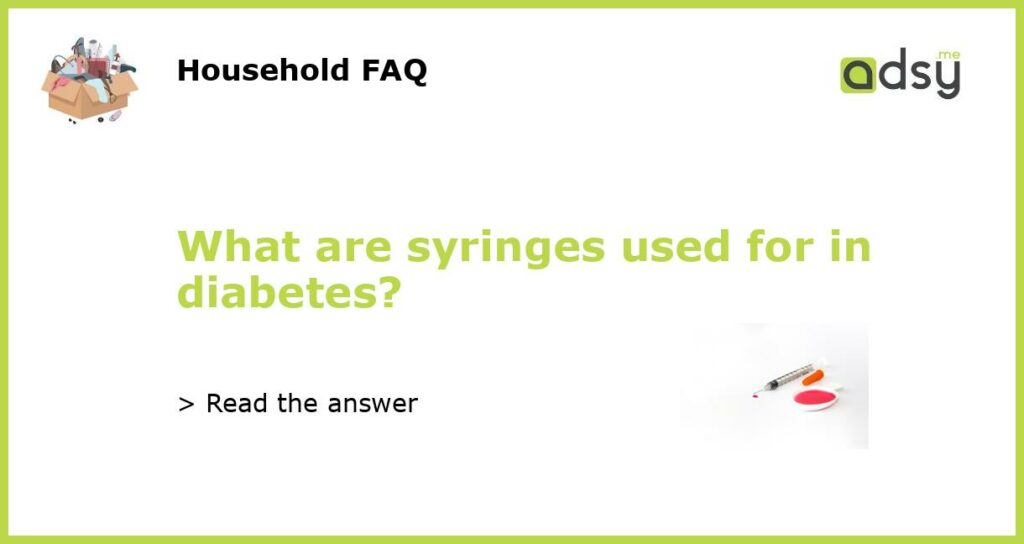Syringes used for administering insulin in diabetes
Syringes are one of the most common tools used in diabetes management. They are primarily used for administering insulin, as insulin needs to be injected into the body rather than taken orally. In this article, we will explore the different uses of syringes in diabetes care and why they are so important for those living with the condition.
Injecting insulin
The main use of syringes in diabetes is for injecting insulin. Insulin is a hormone that helps regulate blood sugar levels in the body. For individuals with type 1 diabetes or type 2 diabetes who require insulin therapy, injecting insulin is a necessary part of their daily routine. Syringes allow for the precise measurement and delivery of insulin into the subcutaneous tissue, usually in the abdomen, thighs, or buttocks.
Insulin pens vs. syringes
While there are other devices available for insulin administration, such as insulin pens and insulin pumps, syringes remain a popular choice for many individuals. Insulin pens are pre-filled devices that come with a disposable needle attached. They offer convenience and ease of use, as they eliminate the need for drawing insulin from a vial using a syringe. However, some people prefer the control and flexibility that syringes provide. Syringes allow for more precise dosing adjustments and are often less expensive than insulin pens.
Other uses of syringes in diabetes care
Aside from insulin administration, syringes have other important uses in diabetes care. One such use is for drawing blood for glucose monitoring. People with diabetes often need to check their blood sugar levels regularly to monitor their condition. This usually involves pricking the finger with a lancet to obtain a small drop of blood. The blood is then drawn into a glucose meter for analysis. In some cases, a syringe may be used to draw a larger sample of blood, especially in clinical settings or for more extensive blood tests.
Syringes can also be used for other injectable medications that may be prescribed to individuals with diabetes. Some examples include medications to treat other conditions that may coexist with diabetes, such as high blood pressure or high cholesterol. These medications may need to be administered via injection, and syringes provide a reliable method for this purpose.
Proper syringe disposal
It is important to note that syringes used for diabetes care should be disposed of properly to prevent needlestick injuries and the spread of disease. Used syringes should never be thrown into regular trash or recycling bins. Instead, they should be placed in a puncture-resistant container, such as a sharps container. Many communities have specific programs or guidelines for the safe disposal of used syringes, and it is important to follow these guidelines to ensure the safety of both individuals and the environment.
In conclusion
Syringes are essential tools in diabetes care, primarily for the administration of insulin. They offer precision, flexibility, and affordability in delivering medications and obtaining blood samples. While insulin pens and other devices exist, syringes remain a popular choice for many individuals. Proper disposal of syringes is crucial to prevent injuries and disease transmission. Overall, syringes play a vital role in the daily management of diabetes and contribute to the well-being of those living with the condition.






